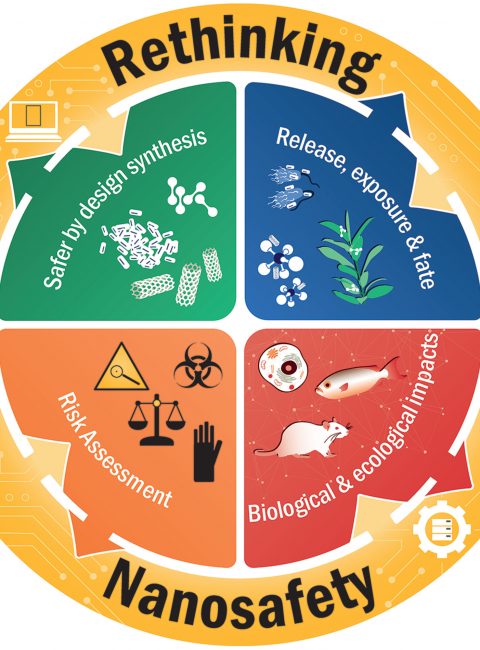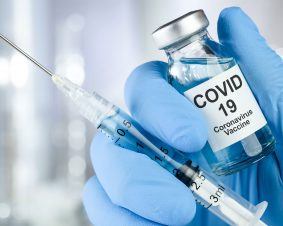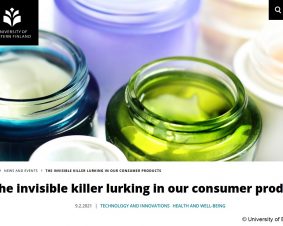 >
Spotlight Juli 2020: “Nanosafety – More than just regulatory processes”
>
Spotlight Juli 2020: “Nanosafety – More than just regulatory processes”
Nanosafety is more than just a compulsory aspect of nanomaterials research and regulation. This research area also has great potential to drive new innovations. It is exactly this perspective that is addressed in the special issue “Rethinking Nanosafety: Harnessing Progress and Driving Innovation” by Chen et al. 2020.
The article illustrates that especially in the field of biology and nanomedicine, safety assessment can contribute to a more fundamental mechanistic understanding of the interaction between nanomaterials and living systems. Innovations based on this can range from personalised nanomedicine to tailor-made nanomaterials for the agricultural industry. In addition, the development of advanced cell and tissue models could further advance the understanding of so-called “adverse outcome pathways” (AOPs) as well as their development and validation.
The Special issue Rethinking Nanosafety brings together more than 50 research projects of renowned scientists in the field of nanosafety and reflects the cooperative and future-oriented character of this research area. The first part of this special issue was published in Small in May 2020. The publication of the second part will follow in July 2020.
Original Publication:
Chen, C., Leong, D.T. and Lynch, I. (2020), Rethinking Nanosafety: Harnessing Progress and Driving Innovation. Small, 16: 2002503. DOI:10.1002/smll.202002503

Weitere Spotlights
Spotlight May 2021: Towards safe and sustainable innovation in nanotechnology: State-of-play for smart nanomaterials
The European Commission’s new Action Plan for a Circular Economy Green Deal, the new European Industrial Strategy as well as the Chemicals Strategy for Sustainability presented in October 2020 are ambitious plans to achieve a sustainable, fair and inclusive economy in the European Union. These strategies require that any new material or product must not […]
Read moreSpotlight February 2021: Nanoobjects in the COVID-vaccine – scientifically correct?
The COVID-19 pandemic induces very different reactions of people on the internet (https://www.cdc.gov/mmwr/volumes/70/wr/mm7002e1.htm) and in the social networks. Without following the conspiracy theories as “5G nanochip hidden in COVID vaccines” some news as “COVID vaccines induce allergic reactions” should be scientifically recognised. The picture from the 5G-nanochip whose plan goes viral on the internet is […]
Read moreSpotlight April 2021: Nanomaterials and Fake News – a commentary based on an example
In February 2021, the article “The invisible killer lurking in our consumer products” appeared, describing nanoparticles as a greater danger than Corona [1]. “The use of nanomaterials” would be “unregulated” and “nanomaterials are so small that they cannot be determined once they are part of a product”. So what is the truth of these statements? […]
Read moreSpotlight June 2021: Endotoxin – the reason for false-positive toxicity testing for advanced materials?
Advanced materials, but also nanomaterials are closely examined to determine whether they trigger biological effects that could be harmful to humans and the environment before they are used in products. This also includes such materials as titanium dioxide, which has been used in a wide variety of products for more than 50 years. A particularly […]
Read more


